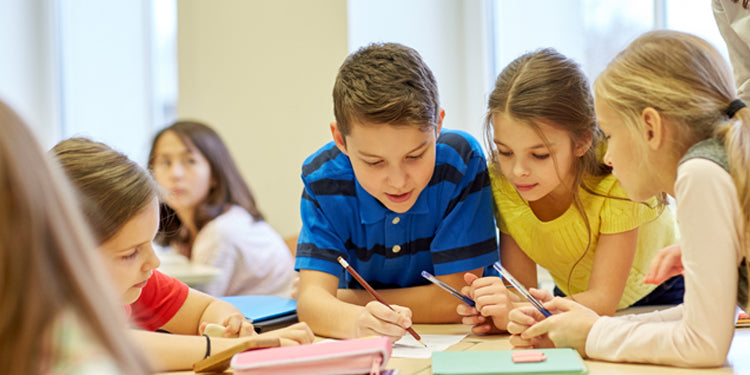At the beginning of the school year, your students arrive with different histories, households, and emotional experiences. Developing social and emotional skills not only influences a student’s willingness and ability to learn—these skills also plays a crucial role in classroom behavioral management.
That being said, abstract topics like emotions do not necessarily lend themselves well to explicit instruction in a classroom. How can you effectively teach emotional literacy? Reading narrative texts will help students develop their emotional and literary intelligence! This five-post blog series will demonstrate ways that narrative books can teach four basic emotions: happiness, sadness, anger, and fear.

Emotional Literacy Also Links to Common Core State Standards
The ability to identify and describe various emotions is crucial for reading narratives. The Common Core State standards for Grade 2 require students to “describe how characters in a story respond to major events and challenges” (CCSS.ELA-LITERACY.RL.2.3), which they can only accomplish after learning how to “use illustrations and details in a story to describe its characters, settings, or events” (CCSS.ELA-LITERACY.RL.17). By building an emotional vocabulary, students can begin to understand how characters feel in different situations.
The skills used to describe fictional characters easily apply to real-life people as well. Scanning illustrations to find clues about the characters’ thoughts is comparable to reading facial expressions. Particular diction and inflection within an utterance can signal the intensity of the emotion. By practicing these reading skills, students also improve their emotional literacy.
Beginning with next week's post, we will share books from Joy Cowley Early Birds and the Kaleidoscope Collection that promote emotional literacy. Today, we’d like to highlight Hameray products that are specifically designed for developing emotional skills:
 A Box Full of Feelings features situational pictures, finger dolls, and posters to introduce emotions. With an emotive music CD and “feelings” masks, there are limitless opportunities for classroom activities. This blog series centers on the same four feelings addressed in this box—happy, sad, angry, and afraid. Familiarizing your students with different facial expressions will help them identify those emotive clues in a story's illustrations.
A Box Full of Feelings features situational pictures, finger dolls, and posters to introduce emotions. With an emotive music CD and “feelings” masks, there are limitless opportunities for classroom activities. This blog series centers on the same four feelings addressed in this box—happy, sad, angry, and afraid. Familiarizing your students with different facial expressions will help them identify those emotive clues in a story's illustrations.
The Feelings Artbook
Students familiarize themselves with emotional issues through drawing activities. The “Empathy” section prompts students to think from different perspectives. This emotional skill serves as the basis for considering the feelings, responses, and personality of fictional characters in a book.
Make sure to click this link to browse our full list of products that will support this blog series.
Next week, we will begin with the most familiar and desired emotion, "happy."Check back on this blog next Thursday to learn about Joy Cowley books that develop emotional literacy!
~~~




















































